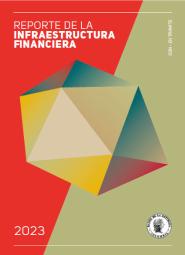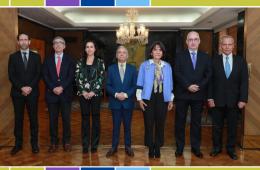How Did the Regional Economies Perform in the First Quarter of 2021?
 Bogotá
Bogotá
(Bogotá D.C., Cundinamarca)
There were signs of recovery in the Bogota-Cundinamarca region during the first quarter of 2021, with annual growth in most economic indicators. Industrial production, domestic and foreign trade and remittances increased. Industrial and commercial confidence improved. Construction showed progress in residential building, while air and land transportation was the activity that lagged the most in the recovery. The unemployment rate remained high, and inflation returned to a historically low level.
 Northeast
Northeast
(Arauca, Boyacá, Norte de Santander, Santander)
In the first quarter of 2021 and despite the impact generated by the second peak in Covid-19 infections during January, various economic sectors in the region continued to see annual growth, demonstrating a recovery, particularly due to the outcome in March, given the effect of the comparative base with the same month in 2020, when strict quarantine measures were initiated. Most of the available indicators of domestic demand and production showed positive variations during the quarter. Inflation continued at levels below the target set by Banco de la República and, in the labor market, informality rose in Cúcuta and the unemployment rate was up in every city in the region.
 Coffee Region
Coffee Region
(Caldas, Quindío, Risaralda)
During the first quarter of 2021, most of the economic indicators for the coffee region increased with respect to the same period in 2020. The high point was the rise in domestic commerce, industrial production, exports and imports (mainly of raw materials for industry) and remittances from abroad. Cargo transportation and construction also increased, with positive momentum in new home sales, approved area for construction and shipments of gray cement. In the agricultural sector, hog slaughter and egg production increased, as did loans to the sector; in contrast, agricultural supplies from the region declined. As for the job market, the unemployment rate remained high in the three capital cities, while inflation was higher than at the national level.
 Northwest
Northwest
(Antioquia, Chocó)
The economy in the Northwest during the first quarter of 2021 posted an annual increase, given better results for most of the monitoring indicators. The most representative increases were in commerce, including automobile and motorcycle sales, as well as in industry and in construction with respect to almost all its variables. At the same time, the reductions in transportation and tourism continued to slow. In the agricultural sector, hog and cattle slaughter increased, but there were lower levels in terms of supply, milking and poultry production. On the external front, exports, imports and remittances increased. The unemployment rate in Medellín rose due to higher labor participation, and declined in Quibdó, although its rate was still the third highest in the country. Meanwhile, inflation in the capital of Antioquia remained within the target range set by Banco de la República.
 Southeast
Southeast
(Amazonas, Casanare, Guainía, Guaviare, Meta, Vaupés, Vichada)
Economic performance monitored in the Southeast during the first quarter of 2021 was mixed. The agricultural sector reported annual growth in the supply of products from Meta and in loans from Finagro for farming and ranching. Several indicators of construction activity were up as well. On the other hand, performance was negative with respect to oil production, domestic trade, vehicle sales and hotel occupancy, as well as air passenger transportation. Exports, excluding oil and its derivatives, posted a recovery, while imports declined. As for the job market, the unemployment rate in Villavicencio exceeded the one reported a year ago, while twelve-month inflation was lower than during the same period in 2020.
 Caribbean Coast
Caribbean Coast
(Atlántico, Bolívar, Cesar, Córdoba, La Guajira, Magdalena, San Andrés y Providencia, Sucre)
The first quarter of 2021 showed annual growth in most of the sectors monitored on the Caribbean coast. Positive results were observed for industry, construction, agricultural activity, domestic trade and incoming remittances. On the other hand, sectors such as transportation and foreign trade remained in negative terrain, but with less of a decline. The job market continued to be affected largely by the impact of Covid-19 on the economy, while the general price index remained on a downward trend.
 Central Region
Central Region
(Caquetá, Huila y Tolima)
The central region registered annual growth in various sectors during the first quarter of 2021, with several of them posting a recovery. In agriculture, cattle slaughter and pork production increased, as did Finagro loans to the sector. In construction, there was a recovery in certain variables, coupled with an increase in construction costs; vehicles sales rose as well, above the national average, and there was an increase in exports, imports and remittances. On the contrary, transportation and hotel occupancy declined, as did oil production in the mining sector and the demand for electricity as part of public utilities. Inflation was below the monetary policy target range and unemployment in the job market rose in Ibagué and Neiva.
 Southwest
Southwest
(Cauca, Nariño, Putumayo, Valle del Cauca)
The economy in the Southwest continued to recover during the first quarter of 2021, exhibiting annual increases in the different monitoring indicators. Performance with respect to production and sales in terms of manufacturing, cargo shipment and the movement of passengers improved. The good momentum in new home construction and sales continued, fueled by growth in remittances to the region, subsidies for home buyers and an ample supply. Domestic demand rebounded, sparking an increase in real sales in commerce, although below the national average. Exports and imports were up as well. In contrast, agricultural activity experienced reductions in poultry supply and sugar cane harvesting. In the region’s urban areas, inflation was low and unemployment was high.




















































